SAT Punctuation: Tips for Commas, Colons, and Dashes
Author
Hartwell
Date Published
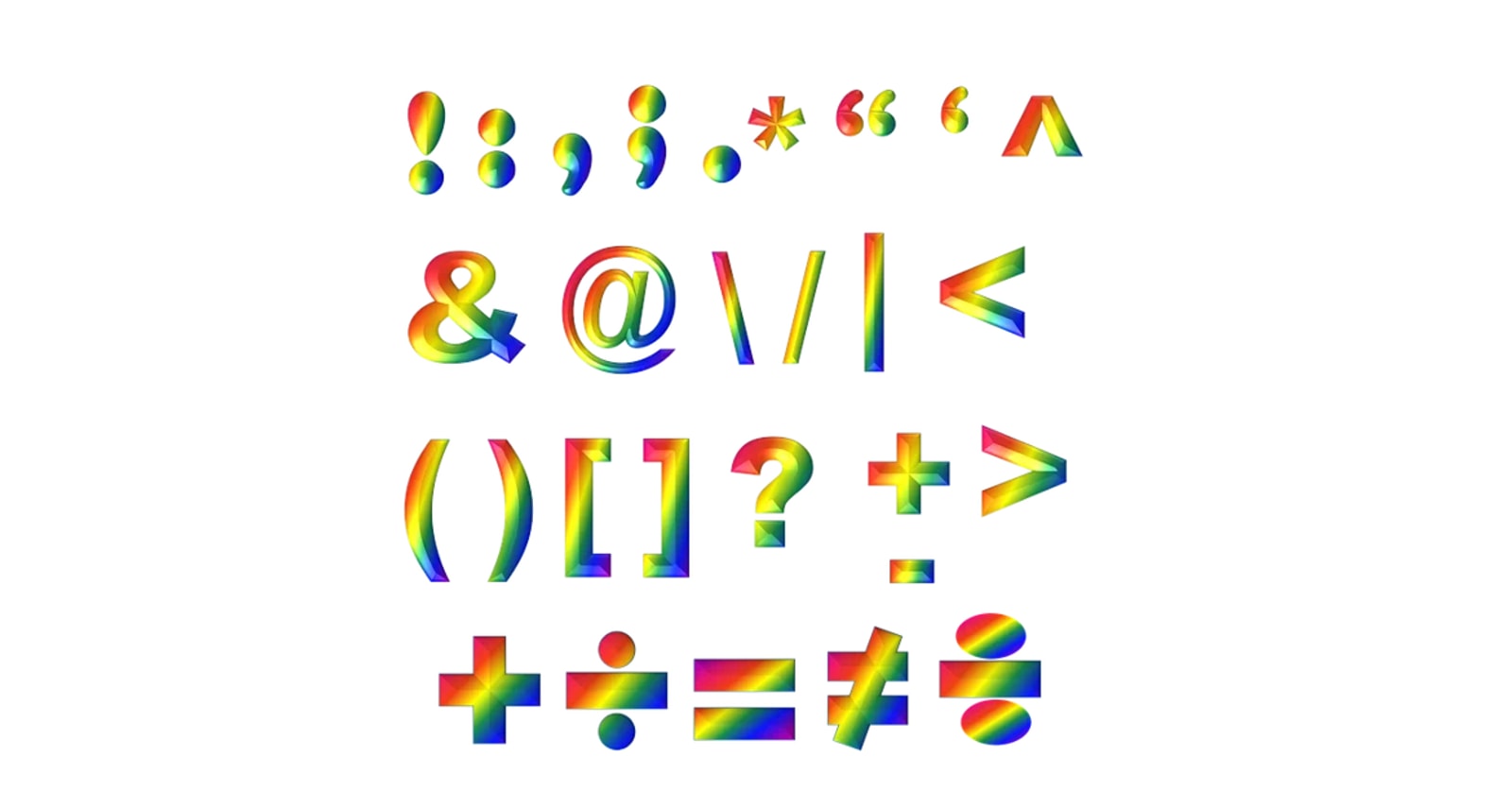
The SAT Reading and Writing section evaluates your knowledge of punctuation. It’s no surprise that many students find themselves baffled by commas and semicolons, while also feeling unsure about colons and dashes.
In this article, I’ll break down this confusion and clarify all the punctuation rules you need to master for success in SAT Reading and Writing. Additionally, I’ll provide practice questions to reinforce what you’ve learned.
Punctuation in SAT Reading and Writing
Punctuation questions on the SAT, categorized under "Standard English Conventions," assess your understanding of commas, semicolons, colons, dashes, and apostrophes. The Standard English Conventions category in the digital SAT is divided into two main areas: 1) boundaries, and 2) form, structure, and sense. The boundaries questions specifically test your ability to use punctuation effectively (boundaries, since punctuation defines the limits of phrases, clauses, and sentences).
This article will cover the rules for all punctuation marks except apostrophes, as I have written a separate article exclusively focused on that topic. On SAT Reading and Writing, there are approximately 11-15 Standard English Convention questions, with about half of them relating to punctuation.
While most punctuation rules are relatively simple, dedicating time to understand and memorize them will enable you to confidently answer punctuation questions in SAT Reading and Writing.
The Key Rule for SAT Punctuation Questions: When in Doubt, Leave It Out
When tackling punctuation on the SAT, if you’re uncertain whether a sentence requires punctuation, it’s generally safer to omit it. Use commas, colons, semicolons, or dashes only when you’re sure a situation warrants them. In fact, students are more likely to lose points by adding unnecessary punctuation than by leaving out punctuation that’s actually required. Here’s an example:
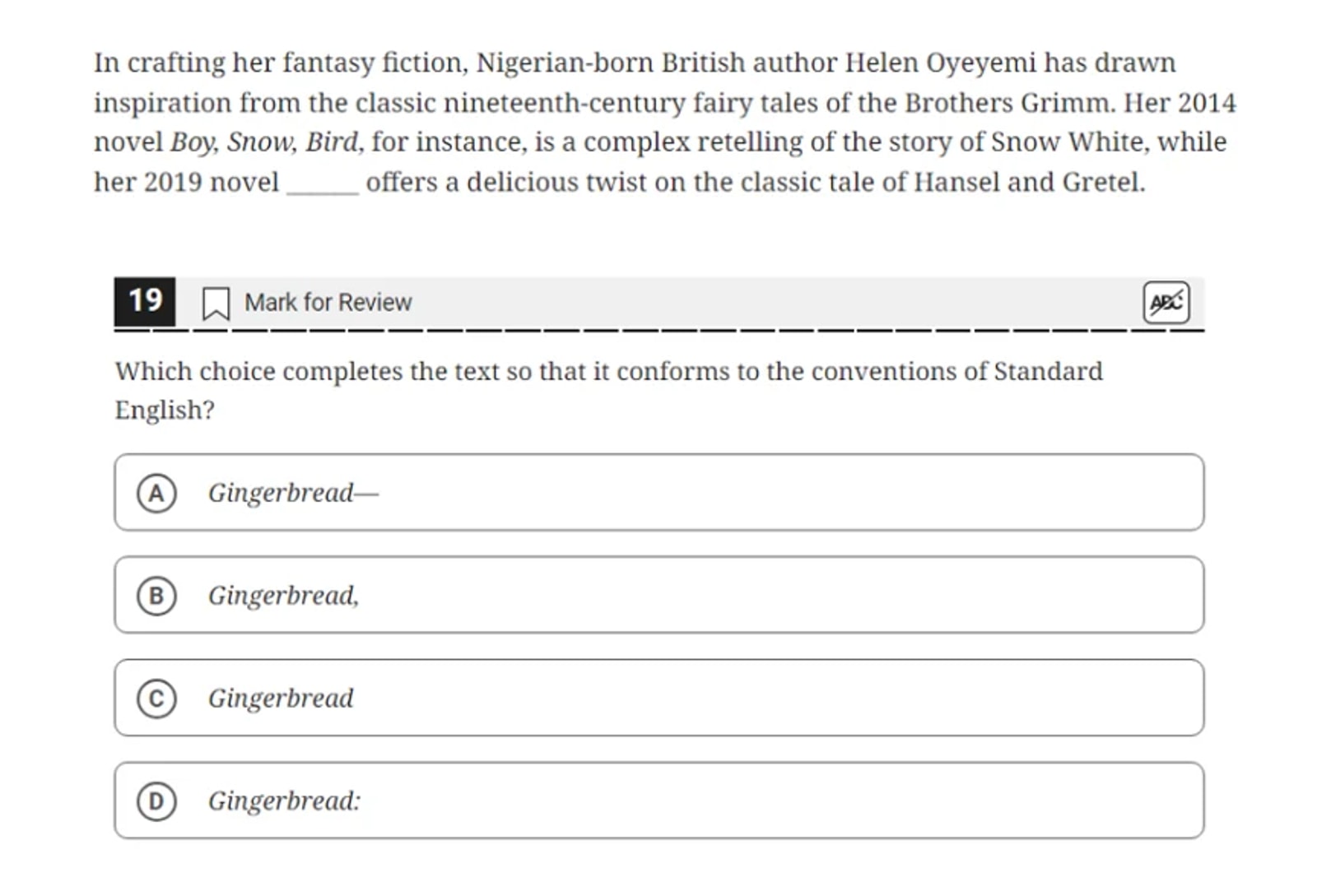
In this example, the comma after "Gingerbread" is unnecessary. A frequent mistake in SAT punctuation questions is the random placement of commas or semicolons within sentences—especially when multiple commas are already present. For this sentence, the correct answer is option C: no punctuation is necessary. Always remember, if punctuation isn’t essential, and the option to leave it out is available, choose to omit it.
Now, let’s review specific rules to help you decide when punctuation is required.
The Top 5 SAT Comma Rules
While a multitude of comma rules exist, the SAT focuses on a select few. This section will cover the essential comma rules you need to master for the SAT exam.
1: Use Commas to Set Off Non-Restrictive Clauses and Appositives
The core principle to remember is that any part of a sentence that can be removed without altering its fundamental meaning must be enclosed by commas.
Relative Clauses: Restrictive vs. Non-Restrictive
Relative clauses are dependent clauses that provide additional information about a noun. They typically begin with relative pronouns such as "who," "that," and "which," or relative adverbs like "where." The fundamental rule is: restrictive clauses are not set off by commas, while non-restrictive clauses are.
What is a Restrictive Clause?
Restrictive clauses are crucial to a sentence's meaning. Removing a restrictive clause would significantly change the sentence's intent.
Example: People who sleep well are more alert.
If you remove the clause "who sleep well," the sentence's meaning changes substantially, leaving us with "People are more alert." Because removing this clause alters the core message, it should not be enclosed by commas.
What is a Non-Restrictive Clause?
A non-restrictive clause, on the other hand, is not essential for the sentence's meaning. Removing it would still allow the sentence to make sense without changing its core message.
Example Sentence with Non-Restrictive Clause Underlined: Nate, who works as a software engineer, majored in computer science.
The clause "who works as a software engineer" offers extra detail about Nate. However, if removed, the sentence's meaning remains intact: "Nate majored in computer science." While less information is provided about Nate, the primary statement still holds true.
What is an Appositive?
An appositive is a descriptive phrase that does not contain a verb. Similar to a non-restrictive clause, an appositive can be removed without altering the sentence's essential meaning.
Example Sentence with Appositive Underlined: Torsha, a fan of celebrity gossip, loves watching The Wendy Williams Show.
Omitting the appositive leaves the sentence with the same meaning: Torsha loves watching The Wendy Williams Show.
To determine if a phrase is an appositive, try removing it. If the sentence's meaning remains unchanged, the descriptive phrase is an appositive and should be set off by commas.
The rule regarding appositives being enclosed by commas is one of the most frequently tested comma rules on the SAT.
SAT Example and Strategy
Let's work through an example using the process of elimination:

Answer choice A is incorrect. A semicolon requires independent clauses (complete sentences) on both sides. The phrase beginning with "producing" is not an independent clause.
Answer choice B is also incorrect for the same reason as A. Splitting the sentence with a period would create a sentence fragment starting with "producing."
Answer choice C can be the most confusing. Without any punctuation, it's hard to distinguish "the study of fungi" as a non-restrictive clause providing additional information about mycology. The sentence appears to run on and is difficult to parse.
The correct answer is D. This choice correctly encloses "the study of fungi" within two commas, effectively setting apart a non-restrictive clause. Because this clause can be removed without changing the main point of the sentence, we know it is indeed non-restrictive.
2: Commas After Introductory Phrases or Clauses
When a sentence begins with a dependent clause or a modifying phrase, it should be followed by a comma. This helps signal the transition to the main part of the sentence.
Examples:
Although I want to go to Hawaii for Joe’s wedding, I have to work. (Introductory dependent clause)
In high school, Suzy was the class clown. (Introductory prepositional phrase)
Unable to focus because of the loud construction work outside, Harry went to the library to study. (Introductory participial phrase)
SAT Example:
On the SAT, you might encounter a sentence with an introductory dependent clause or phrase. Your task will be to select the correct punctuation to follow it. Remember, only a comma is appropriate after an introductory element that is not a complete thought.
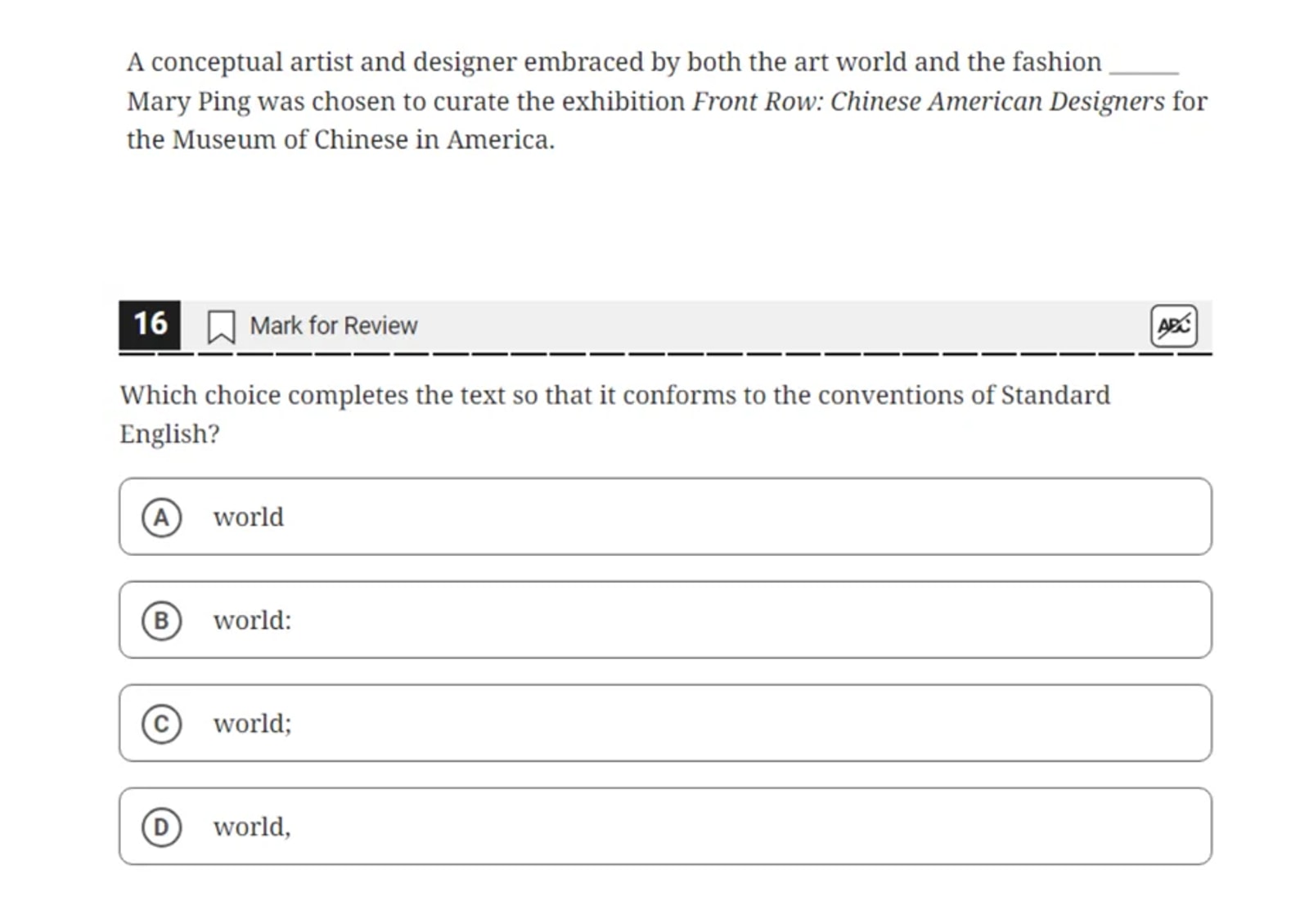
Analysis: In the provided example, the phrase "A conceptual... fashion" acts as an introductory phrase modifying "Mary Ping." Since this phrase is not a complete thought, a comma must be placed at its end. The correct answer, as indicated, is D.
3: Commas to Separate Items in a List
This is a familiar rule: when listing three or more items, place a comma after each item except the last one.
Example: During spring break, my days will consist of eating, watching Netflix, and sleeping.
The items are "eating," "watching Netflix," and "sleeping." The comma after "watching Netflix" is standard. The comma before "and" (the Oxford comma) is technically optional, and the SAT does not test your preference for using or omitting it. However, most SAT list questions incorporate the Oxford comma.
Another Example: Participation in sports teaches many important values, including perseverance, teamwork, and dedication.
The items are "perseverance," "teamwork," and "dedication." Be aware of common errors on the SAT: placing a comma after "including" or before the final item after "and."
Incorrect: Participation in sports teaches many values, including, perseverance, teamwork, and dedication.
Incorrect: Participation in sports teaches many values, including perseverance, teamwork, and, dedication.
Correct: Participation in sports teaches many values, including perseverance, teamwork, and dedication.
SAT Example:
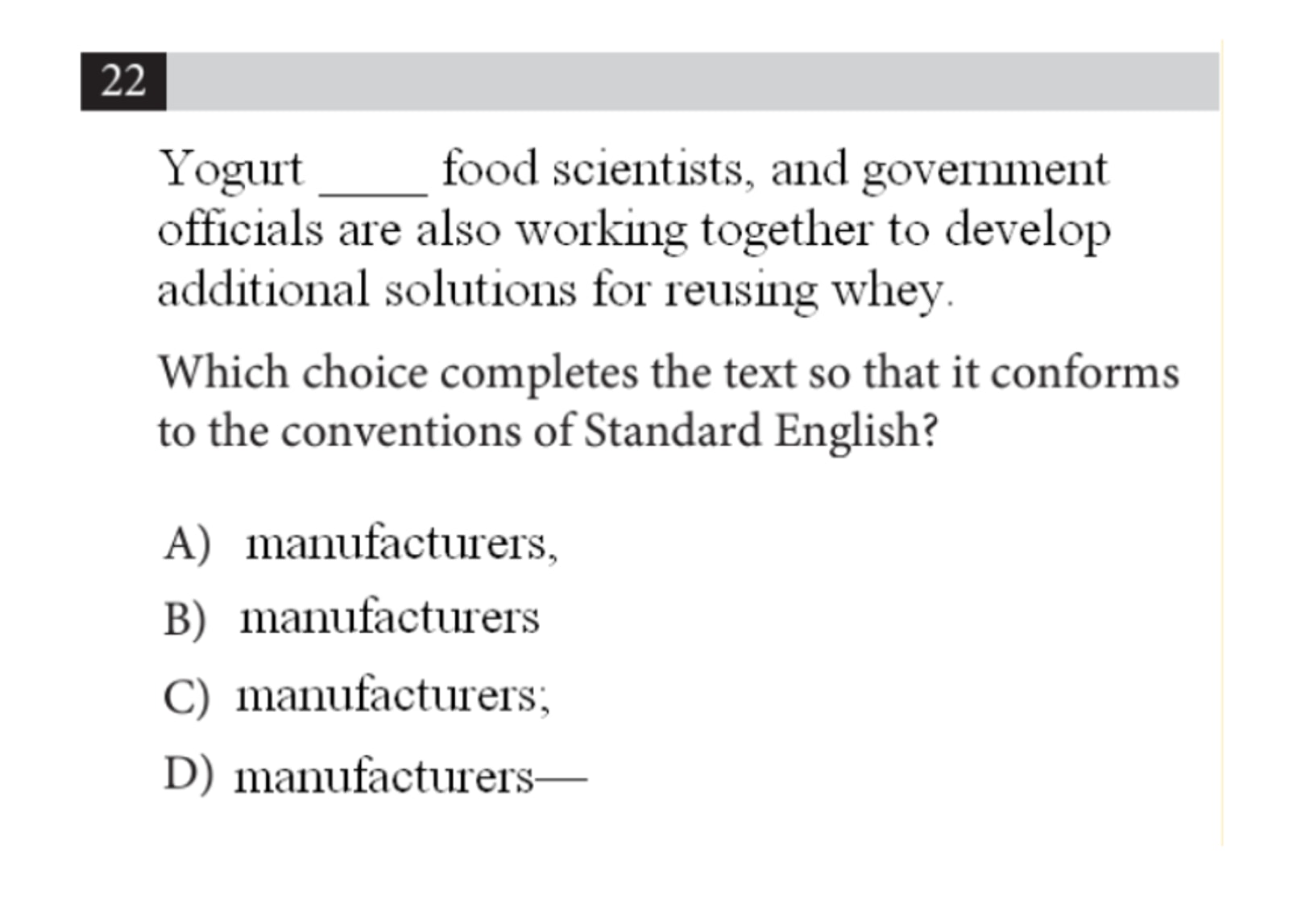
The SAT tests the rule that items in a list must be separated by commas. In this case, the list includes "yogurt manufacturers," "food scientists," and "government officials." The correct answer (B) correctly places a comma after "manufacturers," the second item in the list.
4: Avoid Commas to Separate Complete Thoughts (Comma Splices)
Using a comma to join two independent clauses (complete thoughts that can stand alone as sentences) creates a grammatical error called a comma splice.
Comma Splice Example: Dorothy failed her test, it was extremely difficult.
Both "Dorothy failed her test" and "it was extremely difficult" are complete thoughts.
How to Correct Comma Splices:
Add a coordinating conjunction: Dorothy failed her test, but it was extremely difficult.
Add a relative pronoun: Dorothy failed her test, which was extremely difficult.
Use a semicolon or colon:
Dorothy failed her test; it was extremely difficult.
Dorothy failed her test: it was extremely difficult.(This works if the second clause explains or elaborates on the first.)
SAT Example:
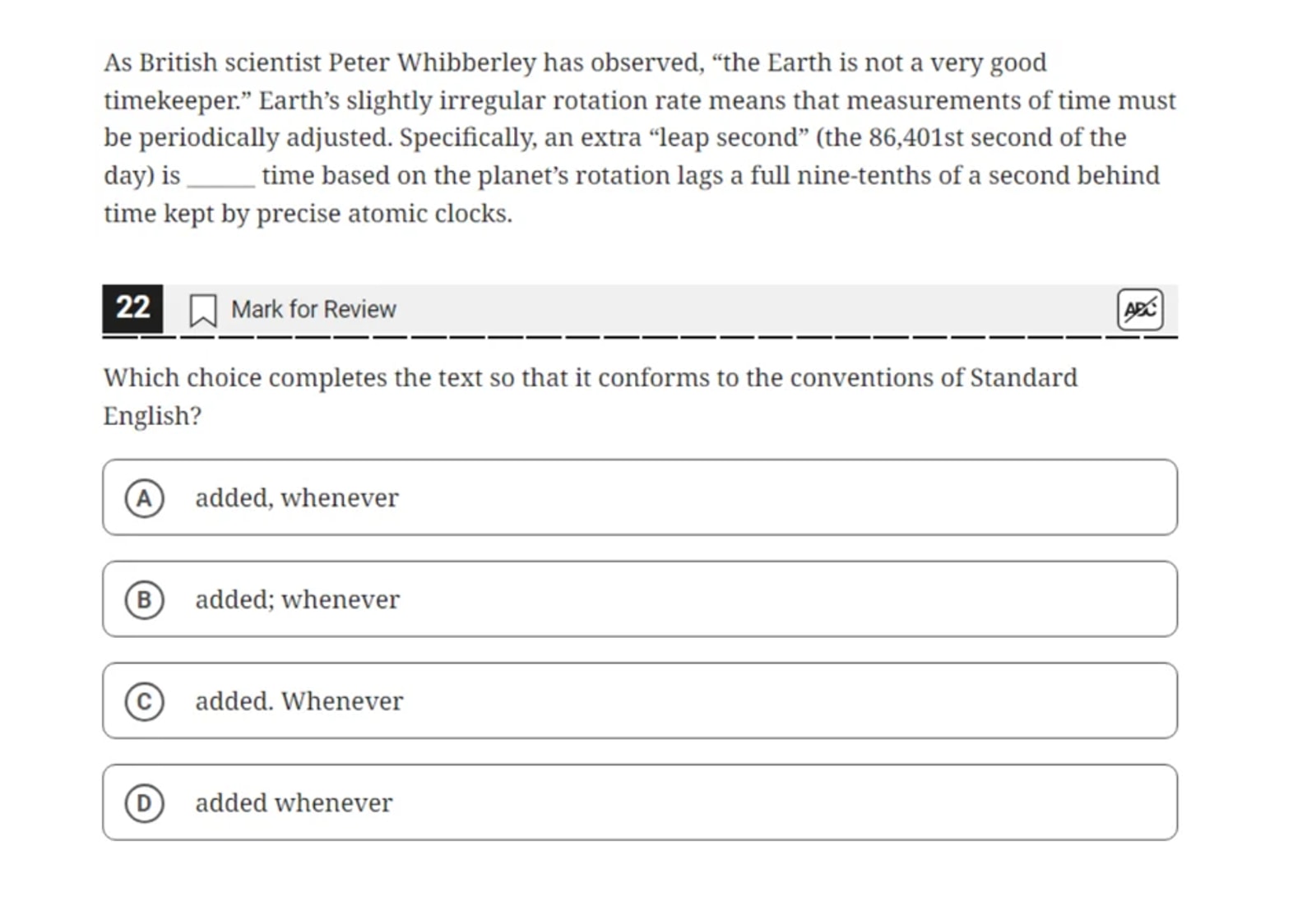
In the provided SAT example, placing a comma after "added" is incorrect. It interrupts the thought before it's fully expressed, causing confusion. The fragment "Specifically, an extra "leap second" (the 86,401st second of the day) is," lacks a clear purpose. Answer choice D is correct because adding any punctuation after "added" would disrupt the flow and meaning of the intended thought.
5: No Comma Between an Adjective and a Noun
You should never place a comma between an adjective and the noun it modifies.
Incorrect: Trista bought a blue, truck.
Correct: Trista bought a blue truck.
This rule often appears on the SAT when a title functions as an adjective preceding a noun.
Examples:
Incorrect: I enjoy reading the books of acclaimed writer, Malcolm Gladwell.
Correct: I enjoy reading the books of acclaimed writer Malcolm Gladwell.
Explanation: Here, "writer" acts as an adjective describing Malcolm Gladwell. Since you cannot place a comma between an adjective and a noun, the comma after "writer" is incorrect.
Similarly, if a title precedes a possessive noun, no comma should separate them or the possessive from the following word.
Incorrect: You are extremely excited to read PrepScholar writer, Justin Berkman’s next article.
Incorrect: You are extremely excited to read PrepScholar writer Justin Berkman’s, next article.
Correct: You are excited to read PrepScholar writer Justin Berkman’s next article.
SAT Example:
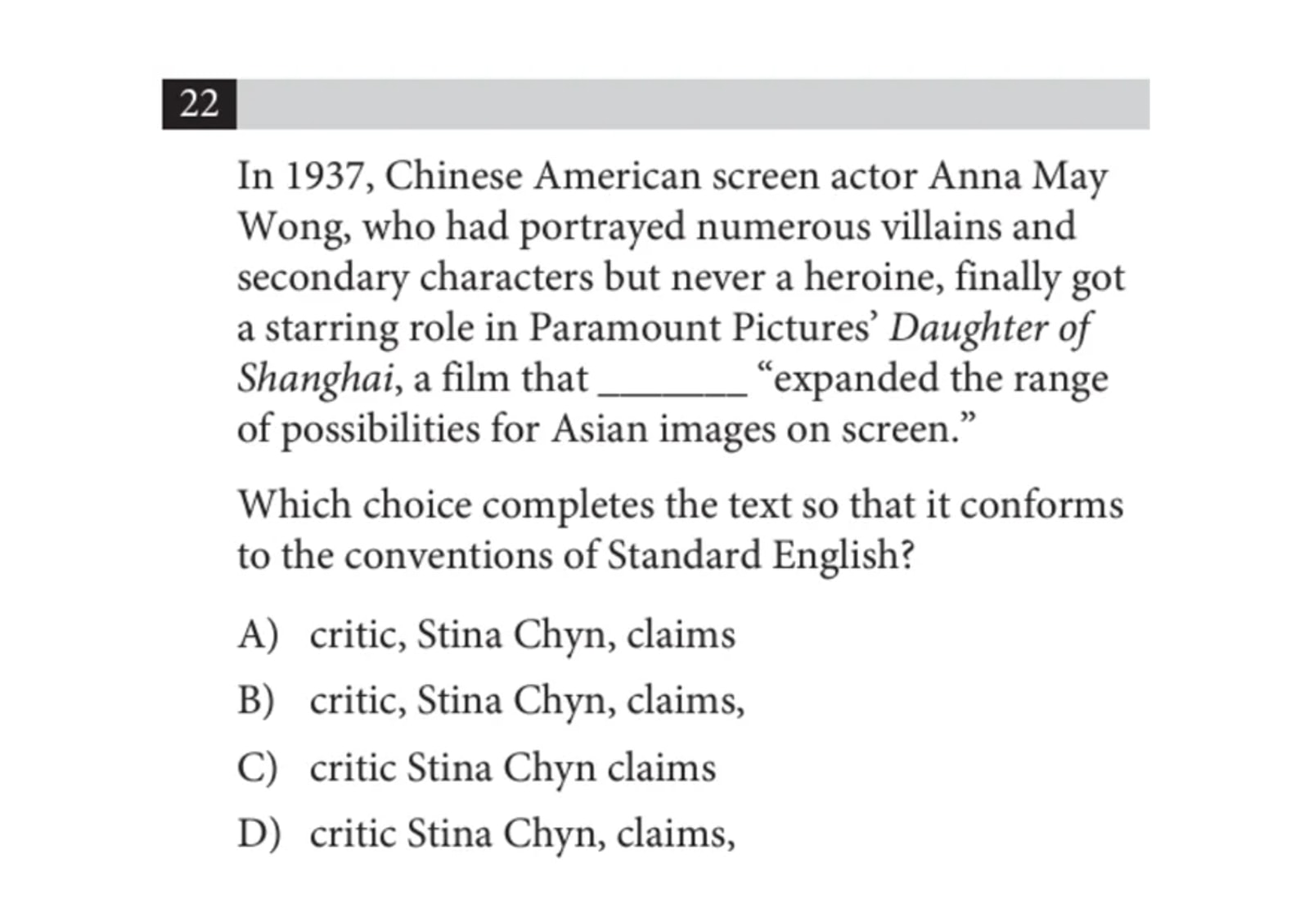
Remember: When a title serves as an adjective to introduce a noun, do not separate them with a comma. In the given example, "critic" is a title acting as an adjective, and "Stina Chyn" is the noun it describes. Answer choices A and B are incorrect because they incorrectly place a comma after the title/adjective, splitting it from the noun. Answer choice C is correct because it introduces the noun "Stina Chyn" and its descriptive title "critic" without any unnecessary interruption.
Semicolons on the SAT
The Key Rule: Semicolons on the SAT are used exclusively to connect two independent clauses (complete sentences) that are closely related in meaning.
How to Test: If you can replace the semicolon with a period and still have two grammatically correct, complete sentences, then its use is likely correct.
Incorrect: Because Jesse is my friend; I invited him to my party.
Reasoning: The clause "Because Jesse is my friend" is not an independent clause; it's a dependent clause that cannot stand alone as a sentence.
Correct: Jesse is my friend; I invited him to my party.
Reasoning: Both "Jesse is my friend" and "I invited him to my party" are independent clauses, so the semicolon correctly joins them.
Be aware that semicolons are frequently misused on the SAT.
SAT Example:
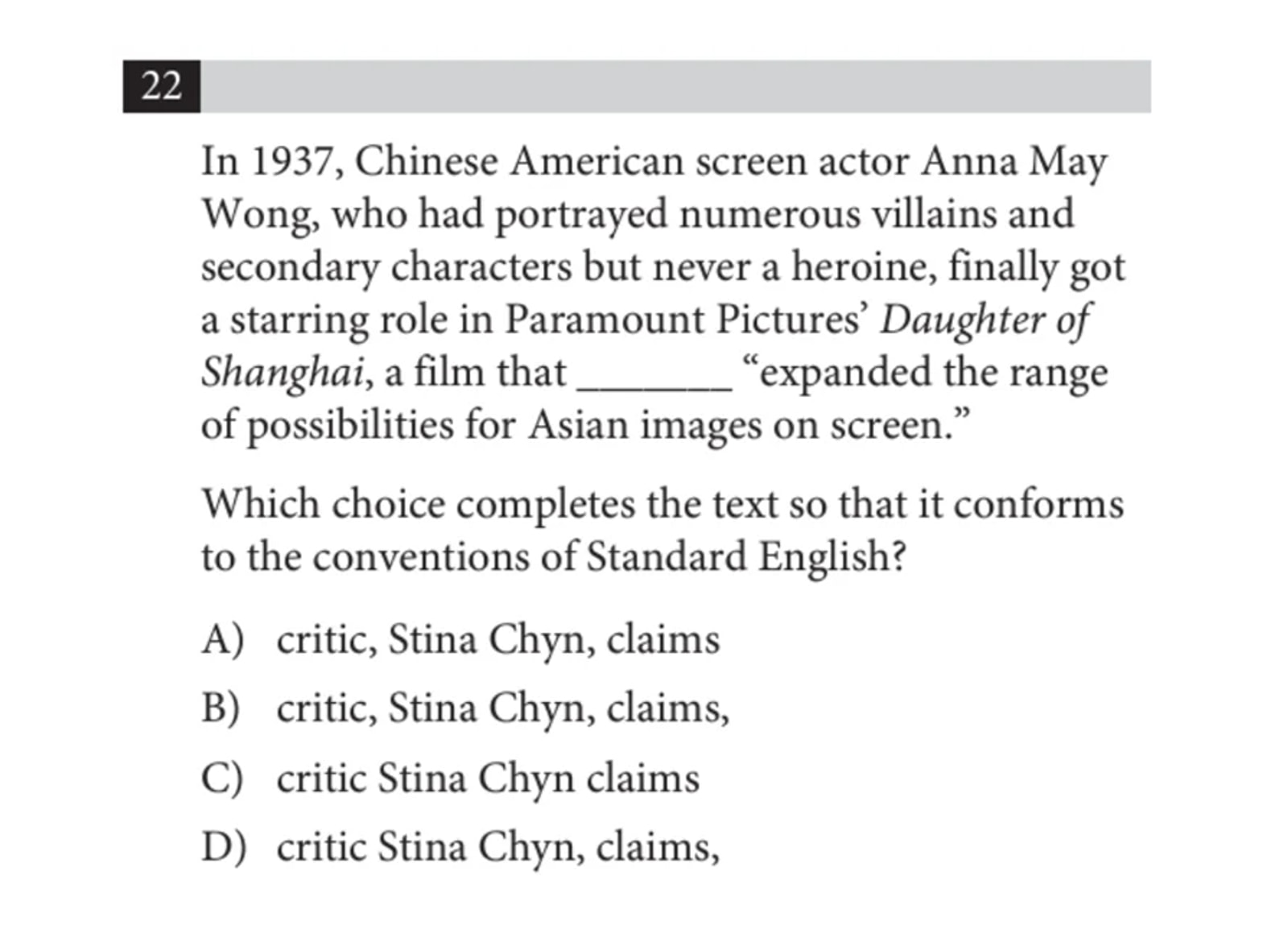
The semicolon in this example is correctly used because both the clause before the semicolon ("So, an extra “leap second” (the 86,401st second of the day) is added to the atomic clock, keeping it synchronized with the Earth’s rotation.") and the clause after it ("this is done to account for the slight slowing of the Earth’s rotation.") can stand alone as complete sentences. Therefore, answer choice C, which correctly uses the semicolon, is the right choice.
Colons and Dashes on the SAT
This section covers colons and dashes, punctuation marks that, while perhaps less frequent than commas, are important to master for the SAT.
Colons on the SAT
While semicolons are restricted to joining two independent clauses, colons have more flexibility. They can connect two independent clauses or an independent clause to a dependent clause.
Key Rule for Colons: Regardless of what follows, the part of the sentence before a colon must be a complete, independent clause. You should be able to replace the colon with a period, and the first part should still make sense on its own.
Colons are commonly used to introduce:
Lists: Especially after a complete sentence that sets up the list.
Incorrect: Jasmine brought everything she needed for the exam, including: pencils, a backpack, and a calculator. (The part before the colon, "Jasmine brought everything she needed for the exam, including," is not a complete thought.)
Correct: Jasmine brought everything she needed for the exam: pencils, a backpack, and a calculator. (The part before the colon, "Jasmine brought everything she needed for the exam," is a complete sentence.)
Explanations or Elaboration: When a second clause expands on or explains the first.
Incorrect: Lewis was excited to meet his relatives, his aunt, uncle, and cousins from the Bahamas. (The comma here creates ambiguity, suggesting "his relatives" is part of a list of things he brought, not the people he's meeting.)
Correct: Lewis was excited to meet his relatives: his aunt, uncle, and cousins from the Bahamas. (The colon effectively clarifies that the following are the specific relatives.)
Explanations in General:
Example: Sandy repeatedly complained about her least favorite restaurants: places where you can often hear loud conversations and crying babies.
Explanation: The colon follows a complete thought ("Sandy repeatedly complained about her least favorite restaurants") and introduces an explanation of what kind of restaurants those are. While a comma could sometimes be used here, the colon creates a stronger separation and emphasis on the explanatory part.
SAT Example (Colons):
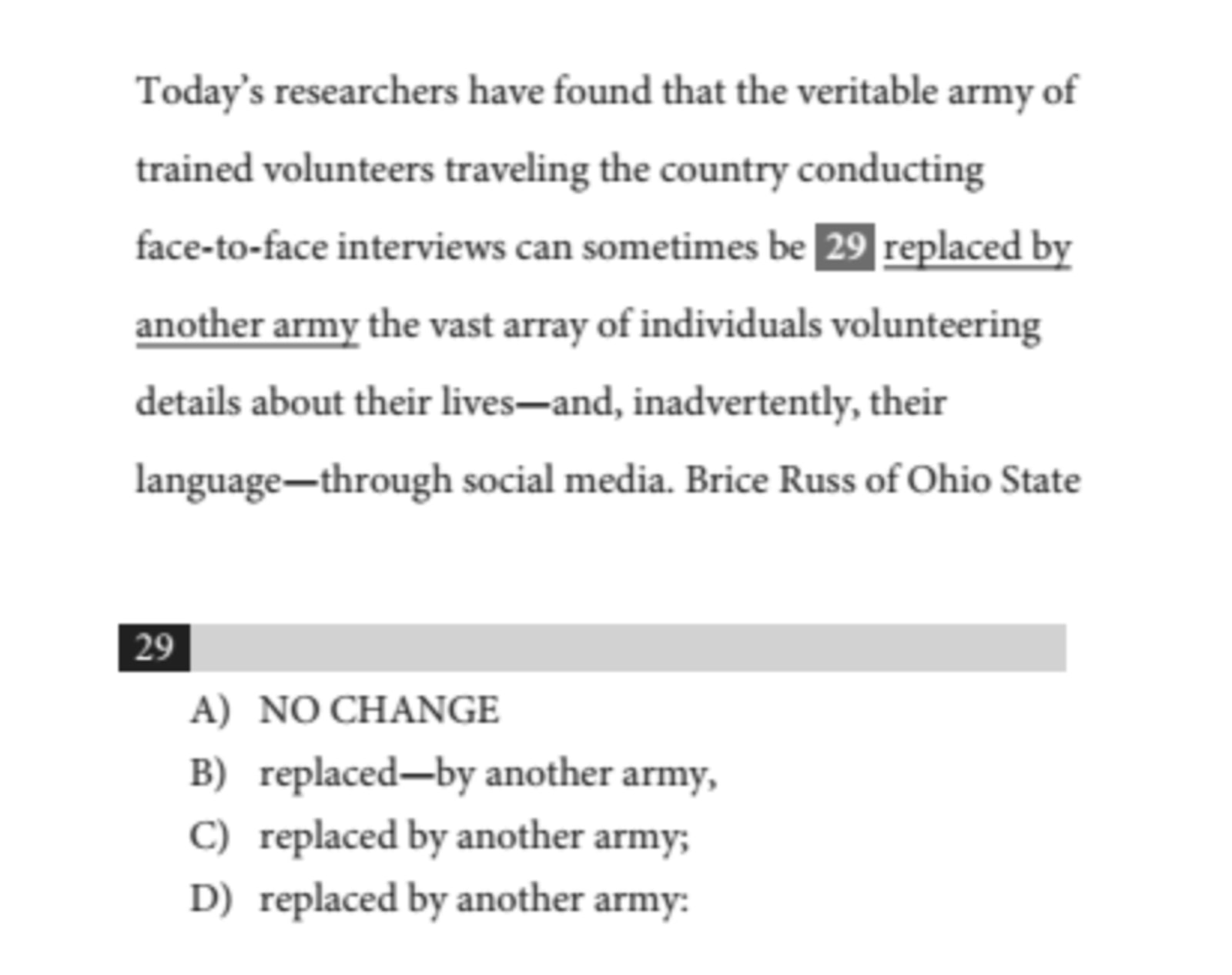
Analysis: The sentence segment up to "army" is a complete thought. The part following "army" describes another type of army. To connect this complete thought with the elaborating phrase, punctuation is needed. Answer choice C is incorrect because the phrase following "army" is not a complete thought, making a colon (or period) inappropriate. Answer choice B is incorrect because the dash before "by" is unnecessary (dashes are discussed next). The correct answer is D, which likely uses a colon to separate the independent clause from the explanatory phrase.
Dashes on the SAT
Dashes are less common but appear on the SAT. They serve several purposes, often similar to commas or colons:
Setting Off Non-Essential Clauses or Phrases:
Important Rule: If you use dashes to set off a non-essential element, you must use two dashes or two commas. You cannot mix them.
Incorrect: Ryan, an energetic teenager—can’t sit still during class. (Mixed punctuation)
Correct (using dashes): Ryan—an energetic teenager—can’t sit still during class.
Correct (using commas): Ryan, an energetic teenager, can’t sit still during class.
Introducing a List or Explanation (Similar to a Colon):
Example: Ryan can’t sit still during class—he’s an energetic teenager.
Explanation: The dash here functions like a colon, connecting a complete thought to an explanation.
Creating a Dramatic Pause or Interruption:
Example: Byron spent hours painting a beautiful picture—and then his little brother destroyed it.
Advice: For this stylistic use, focus on eliminating other incorrect answer choices. If a dash is the only plausible option, it's likely correct.
SAT Example (Dashes):
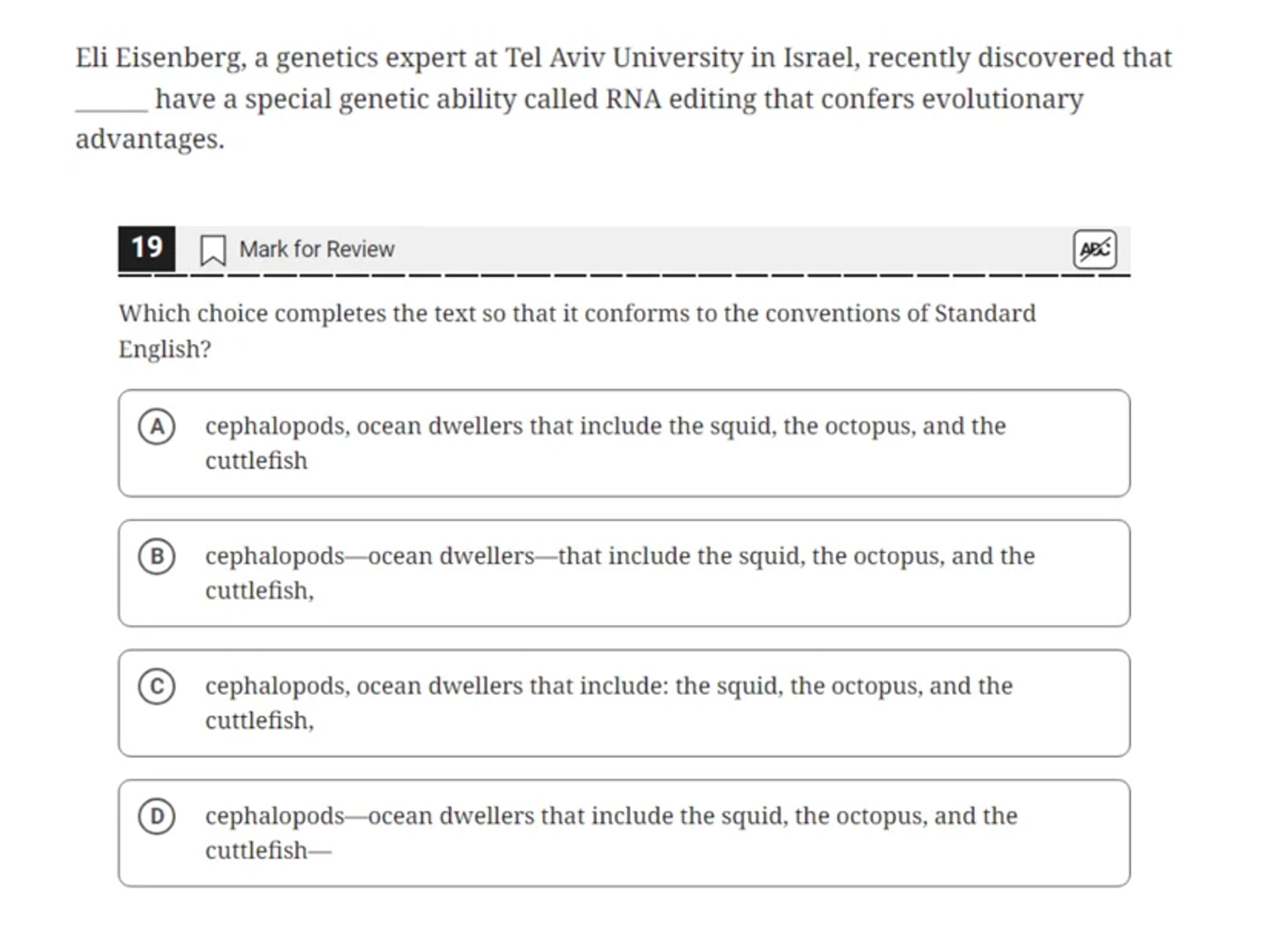
Analysis: The phrase "the squid, the octopus, and the cuttlefish" contains a list and is a non-essential addition to the sentence describing cephalopods. You can remove this phrase without changing the sentence's core meaning.
Using dashes is particularly effective here because the non-essential phrase itself contains commas (for the list). Using dashes avoids the clutter of too many commas. Therefore, choice C, which likely uses a pair of dashes to set off this phrase, is the correct and most stylistically sound option.
Key Takeaways: SAT Punctuation Rules and Strategies
To consolidate your understanding, here's a summary of the most critical punctuation rules and effective strategies for tackling SAT Writing punctuation questions.
Core Punctuation Rules Recap:
Non-Essential Elements: Use commas to set off non-essential clauses (e.g., relative clauses that add extra, but not vital, information) and appositives (phrases renaming a noun). Note: Dashes can also be used for non-essential elements, but you must use a pair of dashes if you choose them.
Lists: Employ commas to separate three or more items in a series. The Oxford comma (the comma before "and" in a list) is generally used on the SAT but is technically optional.
Independent Clauses:
DO NOT use a comma alone to join two independent clauses (this is a comma splice).
Use a semicolon to connect two closely related independent clauses.
Use a colon after a complete independent clause to introduce a list, an explanation, or an elaboration.
Adjectives and Nouns: Never place a comma between an adjective and the noun it modifies. This includes titles used as adjectives before nouns (e.g., writer Malcolm Gladwell, not writer, Malcolm Gladwell).
Introductory Elements: Place a comma after introductory dependent clauses or modifying phrases.
Dashes: Use a pair of dashes to set off non-essential information, much like commas. They can also introduce lists or explanations, similar to colons, often creating a slightly stronger pause.
Essential SAT Punctuation Strategies:
"When in Doubt, Leave It Out": This is a fundamental principle. Unless punctuation is clearly required by a grammatical rule, it's often safer to omit it. Unnecessary punctuation is a common error on the SAT.
Avoid Interchangeable Marks (Usually): The SAT rarely asks you to distinguish between grammatically correct but stylistically similar punctuation choices. If two answer choices perform the same grammatical function and both appear grammatically correct, re-examine them for subtle errors or reconsider the overall sentence structure. One is likely incorrect.
Master Process of Elimination: Focus on identifying definitive errors in answer choices. Many incorrect options will feature common mistakes (comma splices, misplaced commas, incorrect punctuation with lists, etc.). Eliminating these wrong answers can often lead you directly to the correct choice, even if you're not 100% certain about it initially.
Check Both Sides of the Punctuation: When evaluating semicolons, colons, and dashes, ensure the clause before the punctuation is a complete sentence (independent clause). Then, assess if the punctuation is appropriate for what follows. For commas, check if they are correctly setting off elements or if they are incorrectly separating parts of a sentence.
By internalizing these rules and employing these strategies, you'll significantly improve your accuracy and confidence on the SAT Writing and Language section's punctuation questions.
Related Posts
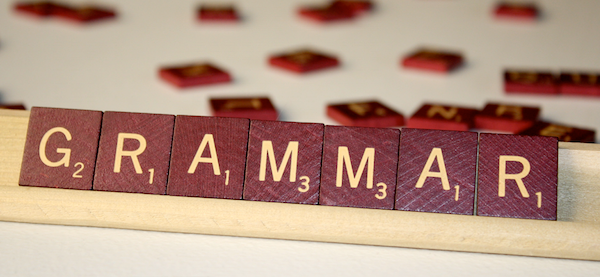
Master the Digital SAT with our comprehensive guide to grammar rules, ensuring you ace the verbal section with confidence.

Think SATs don’t matter anymore? Think again! Uncover why top universities value high scores and how you can ace your test prep.